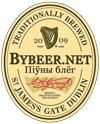A BVI crewed yacht charter delivers a travel experience where pampering, personalization, and pristine natural beauty converge on the deep Caribbean blue. If you’re seeking an indulgent escape through an island-studded paradise, here’s why this option stands out:
1. Relaxation Elevated by Expert Crew
Your vacation begins the moment you step aboard. A captain, chef/hostess, and often additional hands—including deckhands or stewards—take care of everything from navigation to meals, ensuring a completely stress-free journey.
2. Bespoke Services That Cater to You
Every detail of your charter is tailored to your preferences. Bvi crewed yacht charters typically include gourmet cuisine, an open bar, and a selection of water toys like paddleboards, snorkel gear, and entertaining systems. Just tell the team your party size, tastes, equipment needs, and budget—then sail off knowing it’s been crafted just for you.
3. Luxury Meets Comfort at Sea
These charters offer interiors and amenities akin to high-end resorts—air-conditioned cabins, plush bedding, elegant dining areas, and thoughtful touches such as beach towels, beanbags, and superior linens.
4. Freedom to Explore the BVI on Your Terms
Disembark wherever you like—whether at secluded beaches, snorkeling reefs, rustic bars ashore, or cultural highlights like The Baths on Virgin Gorda. Island hopping in the BVI is effortless, making each day a fresh adventure.
5. Seamlessly All-Inclusive
Most BVI crewed yacht charters are all-inclusive—your yacht, the crew, meals, drinks, and activities are bundled into one rate. You just show up and enjoy the ride.
6. Tailored for Every Traveler
Whether you’re planning a romantic getaway, family reunion, or friends’ retreat, a crewed yacht charter adapts to your group’s dynamics. With the crew ensuring smooth sailing, you have more time to relax and bond.
7. Ease for All Experience Levels
No sailing experience? No problem. The professional crew handles every technical detail, so you can unwind entirely—yet you’re free to try your hand at sailing if you wish.
Bonus Insight: A Family’s Tale
One family recounted a week sailing a 50-foot crewed catamaran in the BVI—anchoring near Peter Island at sundown, snorkeling at The Baths, enjoying local cuisine ashore, and exploring hidden coves. The flexibility, service, and captivating scenery made it more memorable than any resort stay.
Ready to Discover Your BVI Escape?
If you’re longing for a sunlit getaway filled with luxury, lush landscapes, and curated freedom, look no further. Dive into the treasures of the British Virgin Islands aboard a meticulously managed BVI crewed yacht charter—your dream voyage awaits.
Discover elite sailing experiences with UC Yacht Charters, experts in crafting unforgettable crewed yacht charters throughout the BVI. Your next extraordinary escape begins here.


